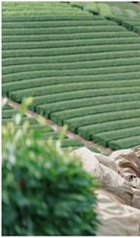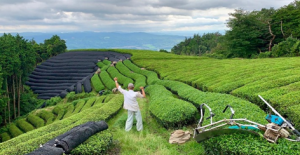Fresh tea season 1 The first medicinal herb encountered by mankind = tea
Yoshie Doi
 Harvesting tea leaves at Kyoto Obubu Tea Farms |
 Kyoto Obubu Tea Farms Tea Plantation |
 |
Kyoto Obubu Tea Farms https://www.obubu.com/
On March 28, 2023, the Kyoto Prefectural Research Institute of Tea Industry issued the declaration of the first germination of Uji tea at the fastest speed ever. Is it because the warm days continued in March this year? Japanese tea has been loved by Japanese people for a long time, and it goes well with Japanese food as drinking water that they drink every day.
I am Kyoto Obubu Tea Farms as an owner of Hitotsubo tea plantation, we can own our own tea plantation in Wazuka-cho for 50 yen a day, and we will receive carefully selected tea from the tea plantation every season. The four times a year fun has been going on for almost 20 years.
There are 420 Hittsubo owners in Japan and 200 owners overseas who are enjoying Japanese tea.
Especially in Kyoto, there are some things that can only be tasted in Kyoto, such as Kyo Bancha and Ao Hojicha. There is also a tea that has been devised as a tea that blends in with the light taste of Kyoto. Sencha is served at meals, some places serve hojicha during meals, and many have matcha after meals.
According to ancient Chinese literature, the first medicinal herb encountered by mankind was tea. The benefits of tea have been passed down since ancient times. In Japan, Japanese tea is mentioned as a detoxifying agent.
It seems that tea was originally eaten as tea leaves in China, but with the discovery of fire, it was used like boiled vegetables, and it seems that the method of drinking the decoction has settled down.
Hagama and Kasha, which were recently discovered in Nagaokakyo City, Kyoto Prefecture, support tea drinking in the era of Emperor Kanmu, and it is pointed out that this custom dates back to the Nara period. In the reign of Emperor Saga, there are even more documents related to tea.
Eisai Shonin wrote Japan’s first book on tea, “Kissa Yojoki,” and when Minamoto no Sanetomo, the third shogun of the Kamakura Shogunate, had a hangover, he recommended that “tea is a cure-all medicine. There remains as episodes.
Eisai and Myoe became acquainted with each other, and Eisai presented Myoe with tea seeds. The seeds were sown in the valley of Kozan Temple, where tea plants were cultivated, and Toganoo tea was born. It was called “Honcha”. Furthermore, he moved the production area from Toganoo to Uji and taught farmers how to plant tea seeds. He instructed them to ride into the fields on horseback and sow the seeds in the hoof marks. A picture comes to mind just by imagining it.
The end of document
